
The C.Plath company was originally founded in Hamburg in 1837 by David Filby, son of an innkeeper in Husum on the west coast of Schleswig-Holstein in North Germany. David Filby traded in nautical literature, charts and sextants imported from England.
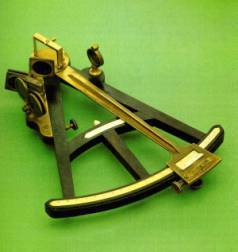
C. Plath
Carl Christian Plath, to whom David Filby sold his highly reputable business in 1862, was born on Christmas Day in 1825. His father was the pastor of the Michaeliskirche in Hamburg "New Town", a church known to seamen all over the world as the "Hamburger Michel". On leaving school he began an apprenticeship as an instrument maker in Hamburg. After completion his apprenticeship, Carl Plath, following the custom of the time, went on his travels to Berlin, Vienna, Prague and Munich before he set up a workshop for the production of surveying instruments in 1857.
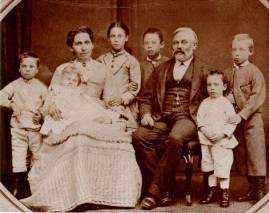
When Carl Plath purchased Filby's business in 1862 he sold his own business to his former employee J. C. Dennert. With his new business Carl Plath concentrated on the manufacture of sextants, magnetic compasses, binnacles and barometers. In August 1887 Carl Plath was awarded a German Reich Patent for his newly developed compass card.
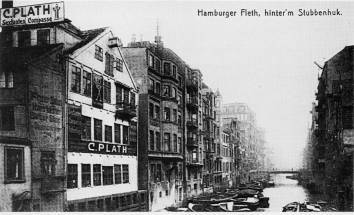
In 1882, three years after Filby's death, Carl Plath sold the nautical literature and charts department of the business to the newly established firm of Eckardt & Messtorff, a bookshop which still exists today.
Gold Medal for nautical instruments
Carl Plath was awarded the Gold Medal at the Hamburg Crafts and Industry Exhibition in 1889 for his nautical instruments, in particular for the excellent precision work.
Also in 1889 Carl Plath's son, Theodor Christian Plath, born in 1868, became co-owner of the company.
Silver Medal of the highest distinction for nautical instruments
Carl and Theodor Plath exhibited a collection of nautical instruments in the Pavilion of the German Shipping Exhibition at the Paris World Exhibition in 1900 and were awarded the Silver Medal as mark of the highest distinction for nautical instruments in commercial shipping.
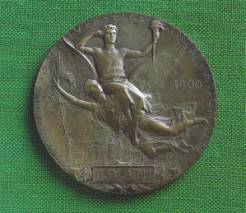
Theodor Plath
In 1905 at the advanced age of 80, Carl Plath retired. Three years later he handed over his share of the business to his son Theodor, who with effect from 30th April, 1908 became sole owner of the firm C.Plath.
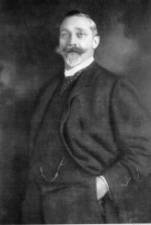

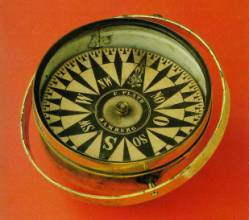
Imperial Patent
The "Sun-Shooter" trademark was registered on 23 October, 1905 and published in the Trademark Gazette of the Imperial Patent Office of March 1906.

Dr Hermann Anschuetz-Kaempfe was granted a patent for the first gyrocompass in 1905 and this new development was closely followed by Theodor Plath, and it was no surprise when in 1912 C.Plath became a sales and service agent for Anschuetz for the merchant marine market, whereas Anschuetz concentrated its efforts on the German Imperial Navy. This business relationship came to an end when the German Reich collapsed at the end of World War II.

Johannes Boysen
Theodor's only son, Johann Christian, died at the age of only 27 in 1929 and wishing to keep the firm in the family, he handed the business over to his son-in-law Johannes Boysen in 1937, but only after he, at the age of 32, had served an apprenticeship as an instrument maker.
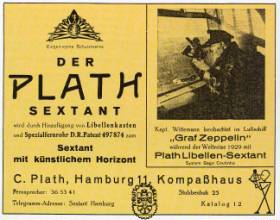
After World War II
After the end of World War II, C.Plath turned to alternative products for survival and started production on a small scale of typewriters, spray guns, machines for making whipped cream and movements for railway station clocks. A modest repair service was also set up in the old head office overlooking the port.
Nevertheless, C.Plath was dismantled completely by the occupation forces. Between May 1948 and May 1949 a total of 143 machines were confiscated and dismantled by the occupying powers.
Product range expands
The relaxation of the various prohibitions in meant that by 1949 C.Plath could begin again the production of its classic range of nautical instruments. Also in 1949 C.Plath was offered a gyrocompass patent and in 1951 the first gyrocompass designed to this patent was presented to the public. C.Plath had now progressed from the role of instrument maker to that of a modern marine navigation equipment manufacturer. In the following years the product range was expanded by many more modern designs such as autopilots, speed logs, radio direction finders, etc.
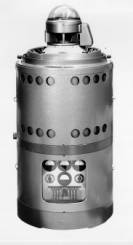
At the beginning of 1953 Johannes Boysen, together with the well-known American navigator P.V.H. Weems, founded in Washington the firm of Weems & Plath Inc., whose main purpose was to step up the sale of C.Plath sextants in the USA.
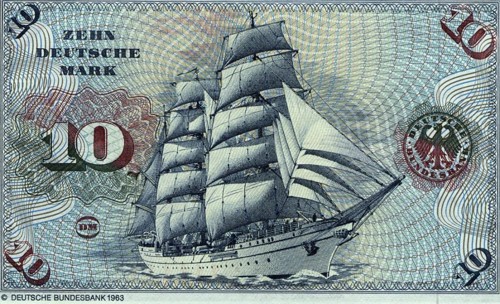
Theodor Plath
Theodor Plath retires from the firm on 31 December 1950 at the age of 82 and gives up his limited partnership. He died at the age of 91 on 16 February 1960.
Litton Industries
In 1962 C.Plath was acquired by Litton Industries, a large American concern with its head office in Beverly Hills, California. Work was immediately started on the production of the LN-3 inertial navigation system for the F 104-G Starfighter for the German Airforce.
C.Plath North American Division is set up in 1978 in College Park near Washington.
After the end of the cold war in 1992, the C.Plath production facilities were moved to sister company Litef in Freiburg in the Black Forest. Engineering, sales and service remained in Hamburg. 1996 saw the introduction of the world's first fiber-optic solid-state gyrocompass by C.Plath. The first ever gyrocompass with no moving parts.
Sperry Marine
Sperry Marine was formed in 1997 with the combination of C.Plath, Decca Marine and Sperry Marine. After 163 years, C.Plath changes its name to Sperry Marine in May 2000.
In 2001 Sperry Marine becomes part of the Northrop Grumman Corporation.